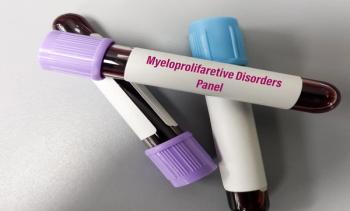
Review: Neoadjuvant Dual ICIs Offer Better Response Than Anti-PD1 Monotherapy in High-Risk Resectable Melanoma
An alternative dose of ipilimumab and nivolumab had less toxicity than a conventional dose, the results show.
A pooled analysis of clinical trials conducted over a 5-year period shows that combining nivolumab (Opdivo) and ipilimumab (Yervoy) as neoadjuvant therapy increased the likelihood of pathologic and radiologic responses among patients with high-risk resectable melanoma than treatment with anti-PD1 monotherapy.
The review also found that an alternative dose of the combination, which relies more on nivolumab, the PD-1 inhibitor, causes fewer grade 3/4 immune-related adverse effects (irAEs) than a conventional dose that relies more on ipilimumab, which targets CLTA-4. The alternative dose offered no disruption in radiologic or pathologic efficacy, wrote authors of the review, which appeared Thursday in JAMA Oncology.1
Both nivolumab and ipilimumab are made by Bristol Myers Squibb.
Authors led by Ankit Mangla, MD, medical oncologist and assistant professor, Department of Medicine, School of Medicine, Case Western Reserve University, reviewed data from 6 clinical trials published between January 2018 and March 2023 to compare outcomes between anti-PD1 monotherapy and dual immune checkpoint inhibitors (ICIs) in the neoadjuvant setting. The authors also sought to assess optimal ICI dosing for patients with high-risk resectable, which was not known.
Patients in the trials had been treated with anti-PD1 monotherapy or 1 of 2 regimens of dual checkpoint inhibitors: either a conventional regimen of 3-mg/kg ipilimumab and 1-mg/kg nivolumab; or an alternative regimen of 1-mg/kg ipilimumab and 3-mg/kg nivolumab.
The roles of the CTLA-4 inhibitor and the anti-PD1 therapy are distinct. As described by
For this latest review, Mangla and co-authors measured radiologic complete response (rCR), radiologic overall objective response (rOOR), and radiologic progressive disease as main outcomes. They also measured pathologic complete response (pCR), the proportion of patients undergoing surgical resection, and occurrence of grade 3/4 irAEs.1
Results. Across 6 clinical trials, the team reviewed records from 573 patients. They found the following:1
- Neoadjuvant therapy with dual checkpoint inhibitors was associated with higher odds of achieving pCR, compared with anti-PD1 monotherapy, with an odds ratio (OR) of 3.16 (P < .001).
- Treatment with dual checkpoint inhibitors was associated with higher odds of grade 3/4 irAE compared with anti-PD1 monotherapy (OR, 3.75; P < .001).
- Conventional dose ipilimumab and nivolumab was associated with greater odds of achieving improved rOOR (OR, 1.95; P = .046) and pCR (OR, 2.99; P < .001) compared with anti-PD1 monotherapy.
- Similarly, alternative dose of ipilimumab and nivolumab was associated with higher odds of achieving rCR (OR, 2.55; P = .03) and pCR (OR, 3.87; P < .001) compared with anti-PD1 monotherapy.
- Compared with the alternative dose, the conventional dose regimen of ipilimumab and nivolumab was associated with increased grade 3/4 irAEs (OR, 4.76; P < .001). Both the conventional dose (OR, 9.59; P < .001) and alternative-dose dual checkpoint inhibitor regimens (OR, 2.02; P = .02) present higher risk of grade 3/4 irAEs compared with anti-PD1 monotherapy, but the alternative dose is associated with less risk.
The authors note that while their findings may inform some decisions, optimal management for patients with progressive disease remains unclear. “All trials report worse outcomes for such patients, with relapses often with the first 2 years,” they wrote.
Significant questions remain about the role of postoperative therapy, and the authors say more trials are needed to resolve these issues. “The foundation for [neoadjuvant therapy] is the hypothesis that administration of immunotherapy before resection may achieve qualitatively or quantitatively better immunologic outcomes, with the expansion of relevant clonal T-cell populations,” they wrote. “These questions remain unanswered.”
References
- Mangla A, Lee C, Mirsky MM, et al. Neoadjuvant dual checkpoint inhibitors vs anti-PD1 therapy in high-risk resectable melanoma: a pooled analysis. JAMA Oncol. Published online March 28, 2024. doi: 10.1001/jamaoncol.2023.7333.
- Buchbinder EI, Desai A. CTLA-4 and PD-1 pathways: similarities, differences, and implications of their inhibition. Am J Clin Oncol. 2016;39(1):98-106. doi: 10.1097/COC.0000000000000239.
Newsletter
Stay ahead of policy, cost, and value—subscribe to AJMC for expert insights at the intersection of clinical care and health economics.













































